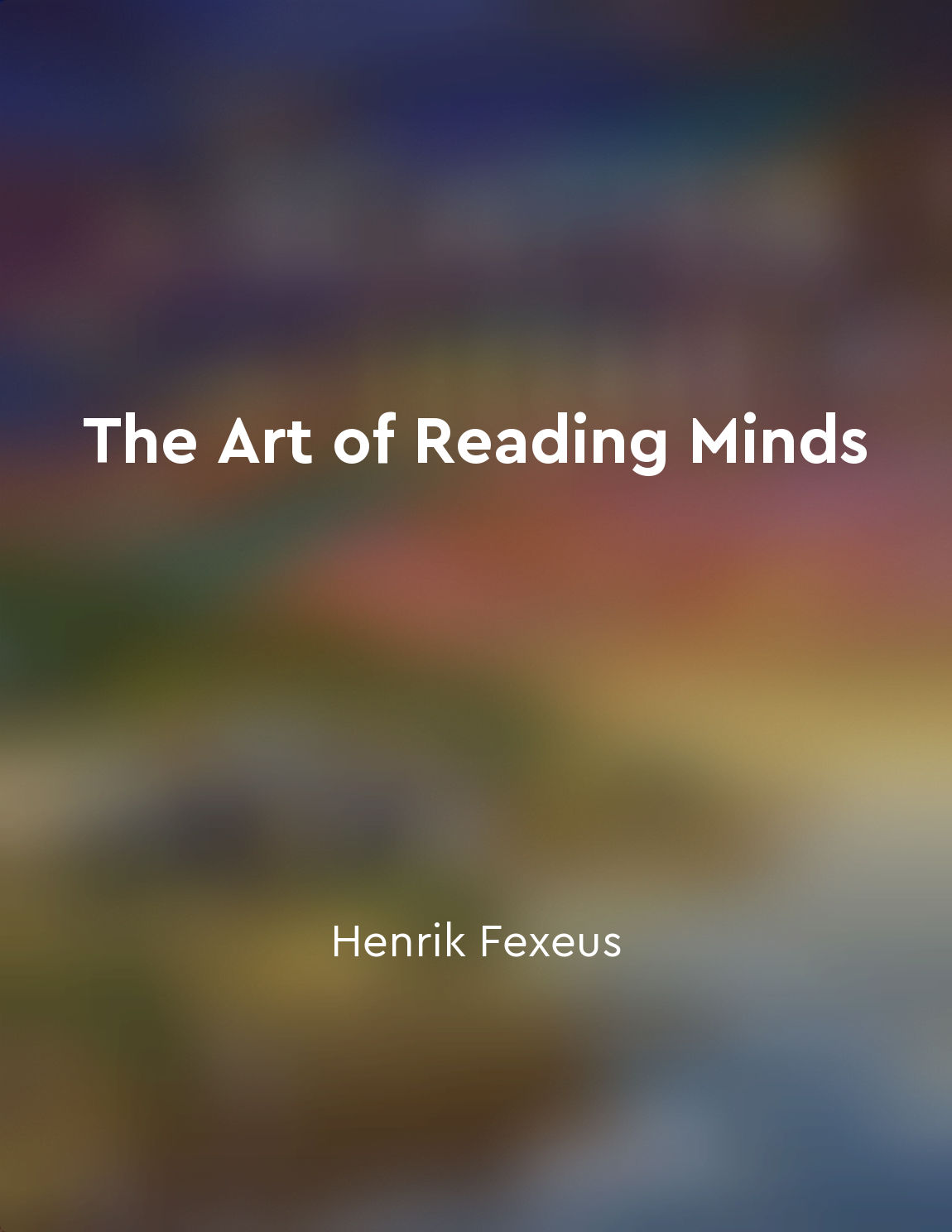Understand the power of nonverbal cues from "summary" of The Art of Reading Minds by Henrik Fexeus
Nonverbal cues are a powerful tool in the art of reading minds. These cues can provide valuable insights into a person's thoughts, feelings, and intentions, often revealing more than words ever could. Understanding the power of nonverbal cues requires a keen eye and a sharp mind, as these signals can be subtle and fleeting. By paying close attention to a person's body language, facial expressions, and tone of voice, you can gain a deeper understanding of what they are truly thinking and feeling. Body language is one of the most important nonverbal cues to pay attention to. Posture, gestures, and movements can all convey a wealth of information about a person's state of mind. For example, crossed arms may signal defensiveness or discomfort, while open gestures may indicate openness and receptivity. By observing these cues in conjunction with other nonverbal signals, such as facial expressions and eye contact, you can paint a more complete picture of someone's inner world. Facial expressions are another key indicator of a person's emotional state. The face is often referred to as the "window to the soul," as it can reveal a person's true feelings in an instant. Microexpressions, fleeting expressions that last for only a fraction of a second, can betray hidden emotions that a person may be trying to conceal. By learning to recognize these subtle cues, you can gain insight into a person's true feelings, even when they are trying to mask them. Tone of voice is yet another important nonverbal cue to consider. The way a person speaks, including their pitch, volume, and cadence, can reveal a great deal about their emotional state. A trembling voice may indicate fear or anxiety, while a steady voice may signal confidence or determination. By listening closely to these cues, you can gain a deeper understanding of a person's underlying emotions and motivations.- Nonverbal cues are a powerful tool in the art of reading minds. By paying attention to body language, facial expressions, and tone of voice, you can gain valuable insights into a person's thoughts, feelings, and intentions. Mastering the art of interpreting these cues takes practice and skill, but the rewards are well worth the effort. By understanding the power of nonverbal cues, you can become a more effective communicator, a more empathetic listener, and a more insightful observer of the human experience.
Similar Posts
Trust is built through open communication
Trust is something that is not easily gained; it requires effort and dedication. One of the key components in building trust is...
Communication is a fundamental skill
Communication, in its myriad forms, is the lifeblood of human interaction. From the moment we are born, we are immersed in a wo...
Practice loving speech
When we speak, our words can either create happiness or suffering. It is important to practice loving speech in order to nouris...
Feedback is essential for effective communication
Feedback plays a crucial role in the process of communication. It serves as a mirror that reflects the effectiveness of our mes...
Clothing and grooming choices can reflect personality
When observing a person's clothing and grooming choices, one can gain valuable insights into their personality. These choices s...
Building rapport takes time and effort
Establishing a strong connection with someone doesn't happen overnight. It requires time and energy to build rapport with other...
Building trust through open and honest communication
When it comes to establishing trust with others, there is one fundamental aspect that cannot be overlooked: open and honest com...
Building credibility through honesty and competence
To be persuasive, one must first establish credibility. This can be achieved through two key components: honesty and competence...
Use storytelling as a powerful communication tool
Storytelling is a powerful tool that can be used to effectively communicate messages and ideas. When we tell a story, we are ab...
Developing selfawareness is important for effective communication
To communicate effectively, it is crucial to be self-aware. Self-awareness allows us to understand our own emotions, thoughts, ...


